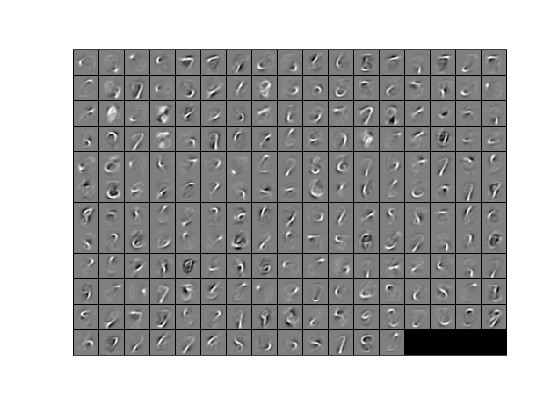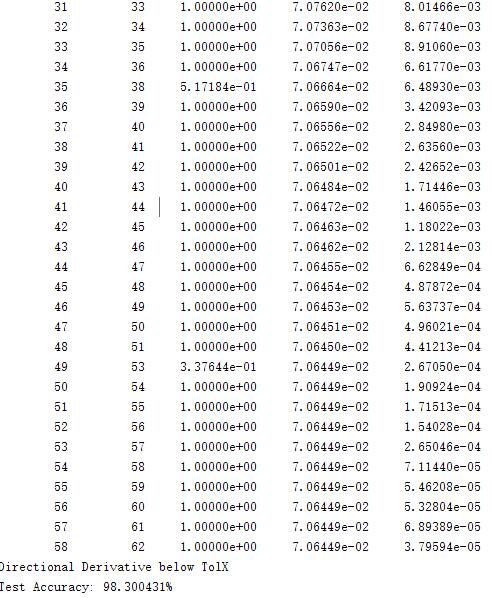1.完整项目描述和程序获取
>面包多安全交易平台:https://mbd.pub/o/bread/Y56Wmpxs
>如果链接失效,可以直接打开本站店铺搜索相关店铺:
>如果链接失效,程序调试报错或者项目合作也可以加微信或者QQ联系。
2.部分仿真图预览


3.算法概述
深度学习(DL, Deep Learning)是机器学习(ML, Machine Learning)领域中一个新的研究方向,它被引入机器学习使其更接近于最初的目标——人工智能(AI, Artificial Intelligence)。
深度学习是学习样本数据的内在规律和表示层次,这些学习过程中获得的信息对诸如文字,图像和声音等数据的解释有很大的帮助。它的最终目标是让机器能够像人一样具有分析学习能力,能够识别文字、图像和声音等数据。 深度学习是一个复杂的机器学习算法,在语音和图像识别方面取得的效果,远远超过先前相关技术。
深度学习在搜索技术,数据挖掘,机器学习,机器翻译,自然语言处理,多媒体学习,语音,推荐和个性化技术,以及其他相关领域都取得了很多成果。深度学习使机器模仿视听和思考等人类的活动,解决了很多复杂的模式识别难题,使得人工智能相关技术取得了很大进步。
4.部分源码
.......................................................................
addpath minFunc/
autoencoderOptions.Method = 'lbfgs'; % Here, we use L-BFGS to optimize our cost
% function. Generally, for minFunc to work, you
% need a function pointer with two outputs: the
% function value and the gradient. In our problem,
% sparseAutoencoderCost.m satisfies this.
autoencoderOptions.maxIter = 400; % Maximum number of iterations of L-BFGS to run
autoencoderOptions.display = 'on';
if exist('opttheta.mat','file')==2
load('opttheta.mat');
else
[opttheta, cost] = minFunc( @(p) sparseAutoencoderCost(p, ...
inputSize, hiddenSize, ...
lambda, sparsityParam, ...
beta, unlabeledData), ...
theta, autoencoderOptions);
save('opttheta.mat','opttheta');
end
% Visualize weights
W1 = reshape(opttheta(1:hiddenSize * inputSize), hiddenSize, inputSize);
display_network(W1');
trainFeatures = feedForwardAutoencoder(opttheta, hiddenSize, inputSize, ...
trainData);
testFeatures = feedForwardAutoencoder(opttheta, hiddenSize, inputSize, ...
testData);
softmaxOptions.maxIter = 100;
lambdaSoftmax = 1e-4; % Weight decay parameter for Softmax
trainNumber = size(trainData,2);
% softmaxTrain 默认数据中已包含截距项
softmaxModel = softmaxTrain(hiddenSize+1, numLabels, lambdaSoftmax, [trainFeatures;ones(1,trainNumber)], trainLabels, softmaxOptions); % learn by features
testNumber = size(testData,2);
A239





































